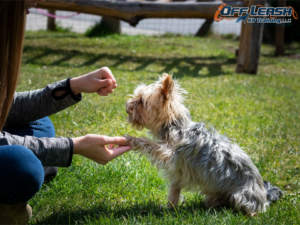Understanding Canine Empathy: Strengthening the Human-Canine Bond
This article discusses the role of canine empathy in understanding and responding to the emotional state of their owners, highlighting the scientific evidence behind this empathetic bond and exploring its implications for dog training and enhancing the human-canine bond.
Introduction to Canine Empathy
Canine empathy is an incredible faculty that enables dogs to understand and respond to the emotions of their owners. This unique capability extends beyond mere biological instincts, highlighting the profound and complex nature of the connection between canines and humans. Over millennia, this bond has evolved through domestication and shared experiences, leading to a level of interspecies empathy that is both rare and remarkable. Dogs, with their keen senses, can pick up on subtle emotional signals from their human companions, such as changes in tone of voice, body language, and even scent. These cues allow them to exhibit behaviors that can significantly comfort and support their owners, enhancing the emotional and psychological well-being of both.
The importance of canine empathy in the human-animal bond cannot be overstated. It is not just about the ability of dogs to recognize when their owners are feeling sad, happy, or stressed; it is also about their instinctual drive to provide companionship and support in those moments. This empathetic connection is a testament to the years of companionship and mutual understanding that have shaped the relationship between dogs and humans. It’s what makes dogs not just pets, but cherished family members and loyal friends. As we continue to learn more about the depth of canine empathy, it becomes increasingly clear that nurturing this bond through positive interactions and understanding is beneficial for both species.
Understanding Canine Empathy

This empathetic resonance is not merely a behavioral response but a reflection of the profound emotional bond shared between dogs and humans. The ability of dogs to engage in emotional contagion, absorbing and mirroring the emotional states of their owners, is a testament to the depth of their empathy. Such interspecies empathy not only underscores the emotional intelligence of dogs but also highlights the significance of their companionship in human lives. Through understanding and responding to our emotional cues, dogs offer more than companionship; they provide emotional support and understanding, enriching the human-canine relationship with every shared experience.
The Science Behind Canine Empathy
Oxytocin, frequently dubbed the “love hormone,” is pivotal in the fabric of the emotional connection that weaves together the lives of dogs and their human companions. This hormone is released during moments of interaction, such as petting, playing, or even a shared gaze between dogs and their owners. This release not only cements the bond between them but also enhances mutual feelings of affection and trust, fostering a deeper understanding and connection over time. This biochemical exchange underscores the evolutionary journey of dogs from wild animals to attuned companions, capable of sensing and responding to the emotional states of humans.
Beyond the hormonal interplay, dogs possess a remarkable ability to decode human emotional cues, a skill honed through thousands of years of domestication and natural selection. Their brains harbor neurobiological mechanisms specifically attuned to human expressions, vocalizations, and body language, allowing them to respond appropriately to our emotions. Whether it’s the joy of a reunion or the distress of a departure, dogs can perceive these emotional nuances, adjusting their behavior to offer comfort, companionship, or space as needed.
Can Dogs Understand Human Emotions?

Furthermore, this empathetic response is not limited to recognizing distress. Dogs can also partake in the joy and excitement of their human companions, demonstrating their ability to understand a wide spectrum of human emotions. This capacity to empathize and react to human emotions forms the foundation of the deep bond shared between dogs and their owners. It’s worth noting that such emotional attunement has been honed over thousands of years of domestication, making dogs uniquely attuned to human emotional states.
Emotional Contagion Dynamics
Emotional contagion, the phenomenon where one individual’s emotions trigger similar emotions in another, is a key aspect of the connection between dogs and their owners. This process is bidirectional; not only can dogs sense and mirror the emotions of their human companions, but humans too can pick up on their dogs’ feelings, creating a shared emotional landscape. This mutual understanding and empathy are crucial in nurturing a strong, empathetic bond between dogs and humans. It underscores the importance of being mindful of our own emotional states around our pets, as our feelings can significantly influence their well-being.
Moreover, dogs demonstrate a remarkable sensitivity to the emotional states of their owners. Studies have shown that dogs are more inclined to approach their owners after being exposed to neutral, nonemotional sounds, as opposed to emotionally charged ones. This behavior suggests that dogs are not only adept at recognizing our emotional cues but also respond in ways that seek to comfort or connect with us during our moments of neutrality or calm.
Canine Empathy in Dog Training

Furthermore, the application of canine empathy in training settings does more than just improve obedience; it actively contributes to the strengthening of the bond between dogs and their owners. When trainers and owners approach dog training with an empathetic mindset, they are more likely to achieve a level of communication and understanding that transcends basic commands. Off Leash K9 Training of Corpus Christi harnesses this power of empathy to create a harmonious relationship between canine and human, offering private lessons and behavior consultations designed to nurture this connection. Their specialized training methods not only consider the dog’s physical responses but also delve into the emotional interplay, ensuring a holistic training experience that benefits both the dog and the owner.
Conclusion: Nurturing the Human-Canine Connection
The ability of dogs to empathize with their human counterparts enriches the bond between them, showcasing the emotional intelligence and sensitivity of our canine friends. For those looking to deepen their bond with their dogs and improve their relationship, exploring the services offered by Off Leash K9 Training of Corpus Christi can be a great start. Visit Off Leash K9 Training of Corpus Christi to discover how their training programs can enhance the emotional connection and communication between you and your dog.







